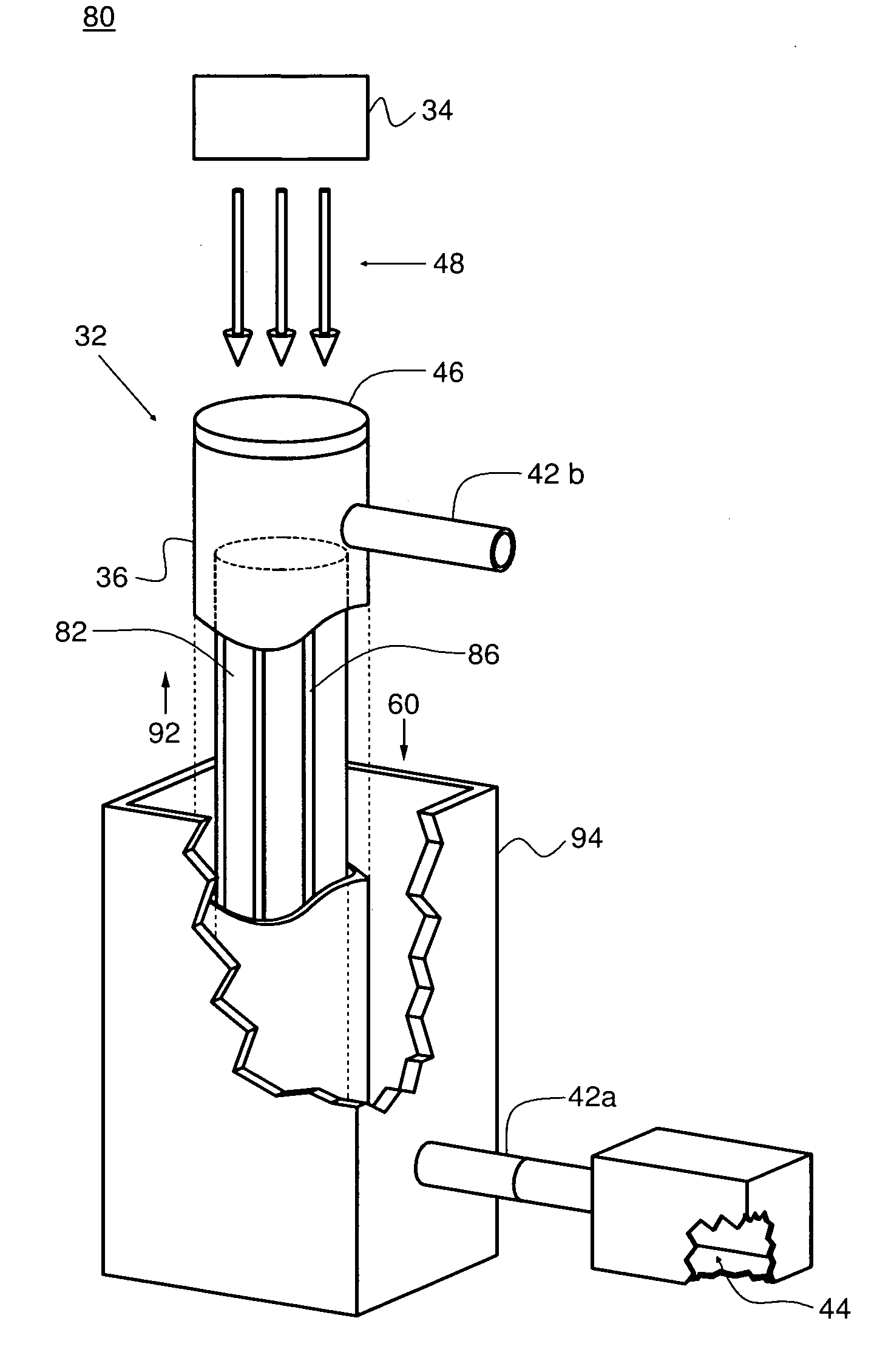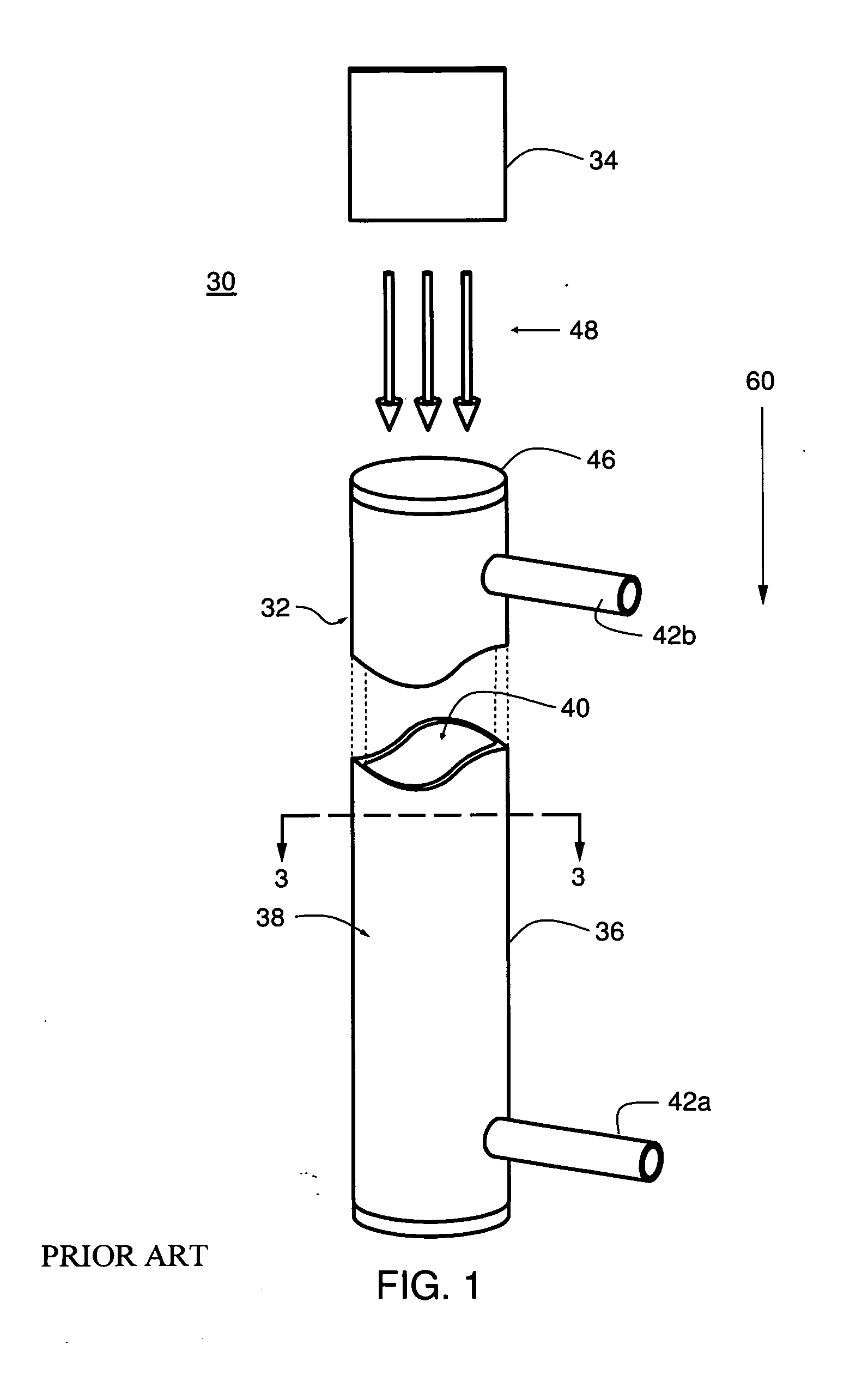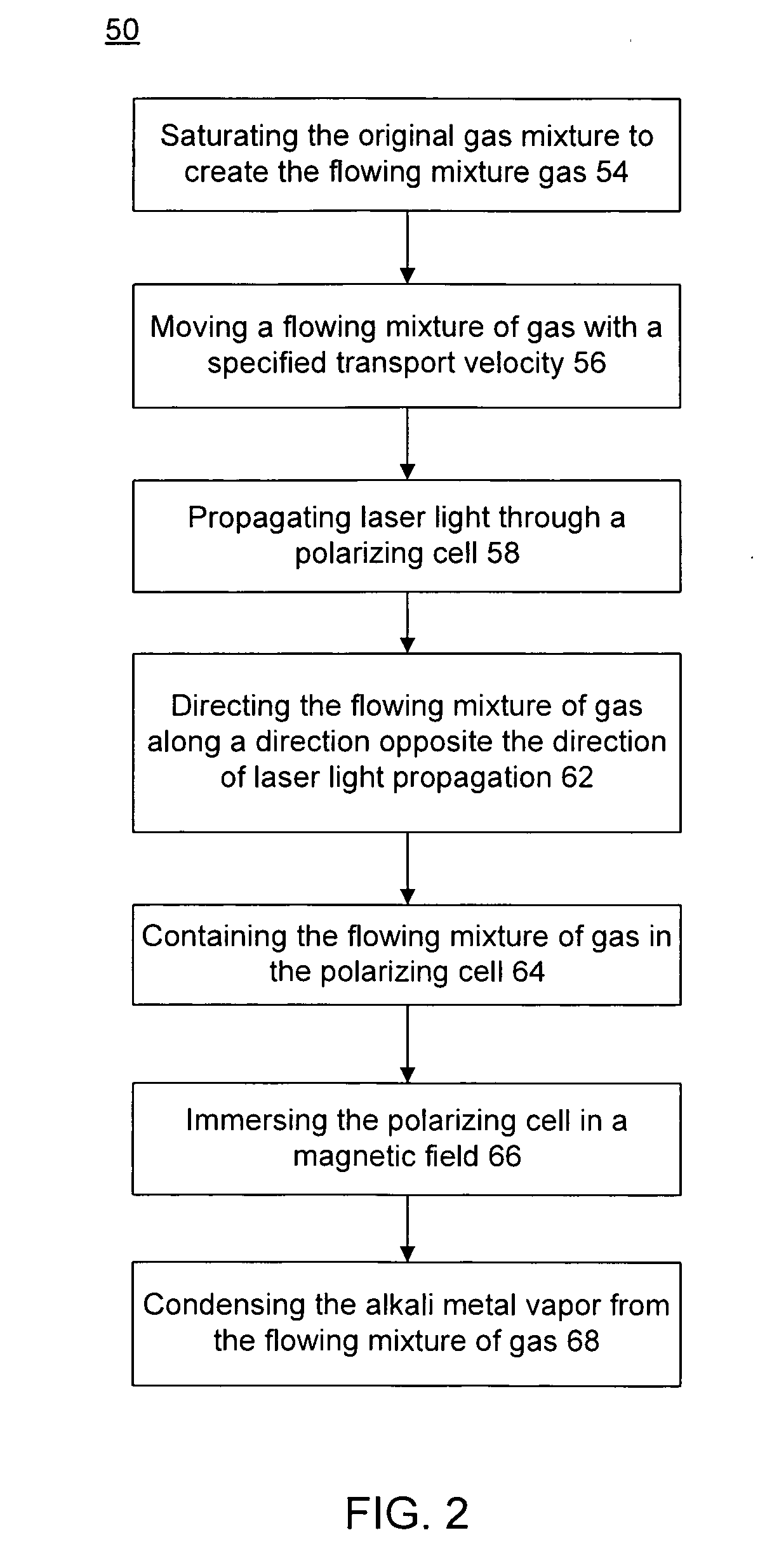Thermal management technology for polarizing xenon
a technology of xenon and thermal management, applied in the field of xenon polarization, can solve the problems and reducing the polarization rate of sup>xe at increasingly high laser power, so as to increase the polarization rate and increase the laser power. , the effect of increasing the temperature of the gas mixtur
- Summary
- Abstract
- Description
- Claims
- Application Information
AI Technical Summary
Benefits of technology
Problems solved by technology
Method used
Image
Examples
Embodiment Construction
[0039] An improved polarizing apparatus utilizes a thermally conductive partitioning system in a polarizing cell. In the polarizing region, this thermally conductive partitioning system serves to prevent the elevation of the temperature of the polarizing cell where laser light is maximally absorbed to perform the polarizing process. By employing this partitioning system, increases in laser power of factors of ten or more can be beneficially utilized to polarize xenon. Accordingly, conventional polarizing apparatus and the method of polarizing 129Xe fail to achieve rates of production achieved by the method described below.
[0040] Referring to FIG. 1, a prior art polarizing apparatus 30 having a polarizing cell 32 and a laser 34 is shown. The polarizing cell 32 has a non-magnetic enclosure 36 having a circular side wall 38 defining an interior 40. The circular side wall 38 has at least two openings, an entrance 42a and an exit 42b for flowing a gas mixture 44 from the entrance 42a to...
PUM
 Login to View More
Login to View More Abstract
Description
Claims
Application Information
 Login to View More
Login to View More - R&D
- Intellectual Property
- Life Sciences
- Materials
- Tech Scout
- Unparalleled Data Quality
- Higher Quality Content
- 60% Fewer Hallucinations
Browse by: Latest US Patents, China's latest patents, Technical Efficacy Thesaurus, Application Domain, Technology Topic, Popular Technical Reports.
© 2025 PatSnap. All rights reserved.Legal|Privacy policy|Modern Slavery Act Transparency Statement|Sitemap|About US| Contact US: help@patsnap.com



